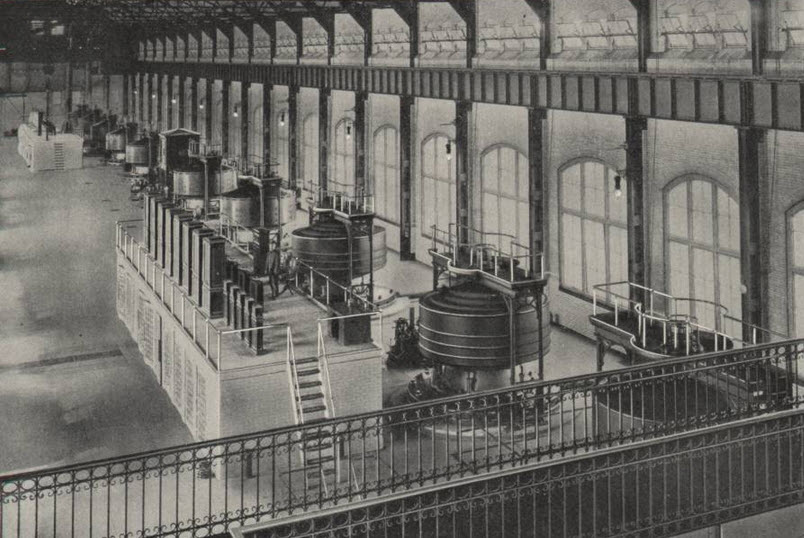In the 1880s, the electrification of the first cities and households begins. With the marketing of the incandescent lamp by Thomas Edison and the first of his company in the USA, the electrification of cities spreads rapidly. As early as 1882, Edison put his first power plant into operation in New York. It supplied its customers in with direct current. The voltage was 110V, to which his light bulbs were designed. However, there was a considerable transmission range. This was just 600 m for the first power plants. Therefore, Edison had to build power plants everywhere. However, alternating current also had these problems in the early days of electrification.
Invention of the transformer brings advantages for alternating current
Due to the low voltage, the current was transmitted at a high amperage. However, this also meant high transmission losses, which in turn required expensive lines with huge cross-sections. Alternating current initially also had these problems, but with the invention of the transformer it was possible to transform it to a higher voltage. This made it possible to transport it more efficiently over longer distances.

Image: Works of the Westinghouse Electric & Manufacturing Company, Public domain, via Wikimedia Commons
Georges Westinghouse relies on alternating current with Tesla
Edison’s competitor Georges Westinghouse therefore relied on alternating current. The basis for this was laid by Nikola Tesla with his multiphase generator. Tesla also had other patents for the transmission technology of alternating current with transformers. Westinghouse recognized the considerable advantages and bought Tesla’s patent rights. Westinghouse then also bought an incandescent lamp factory, breaking Edison’s monopoly.
Edison fights alternating current with all means
This triggered a bitter economic war that went down in history as the Electricity War. This war can also be described as the first war over an industrial standard. Edison tried to prevent the spread of alternating current with all available means. He financed press campaigns and led one lawsuit after another against his competitors. He even tried to demonstrate the danger with the public killing of animals. What went thoroughly wrong, however, was that these demonstrations ultimately led to the development of the electric chair as an instrument of execution, powered by alternating current.
Alternating current begins to gain acceptance
Edison’s bitter struggle, however, could not hide its practical advantages. At the International Electrotechnical Exhibition in Frankfurt in 1891, a powerful long-distance transmission of high-voltage three-phase current was demonstrated for the first time. Electricity was transmitted from the power plant in Lauffen am Neckar over a distance of 176 kilometers to Frankfurt. Direct current had until then been limited to transmission up to a maximum of 2 kilometers. The technical demonstration was the basis for the use of alternating current in Germany.
In the USA, Tesla and Westinghouse won the contract for the World’s Fair in Chicago with this technology. Here, 12 Tesla AC generators supplied the “City of Light” with thousands of lamps. The power of alternating current was thus demonstrated to 27 million visitors.
At the end of 2007, the last direct current collector in the USA switches from to alternating current
Tesla and Westinghouse heralded the end of direct current with the hydroelectric power plant at Niagara Falls. On November 16, 1896, the power plant went into operation and supplied alternating current to the city of Buffalo and later even to New York. With this, the triumphal march could no longer be stopped. In 1928, Edison’s companies stopped further expansion of direct current networks. However, the companies continued to supply existing customers with direct current. Nevertheless, by the early 1970s, there were still over 6,000 DC customers in New York. Of these, 60 customers remained by 2006. It was not until 2007 that the last customer in the U.S. switched from direct current to alternating current.
The following articles have been published so far in the series around the history of electricity:
Who invented the electric current?
The beginnings of the electrification of Germany
